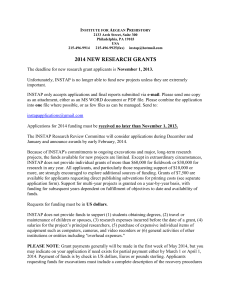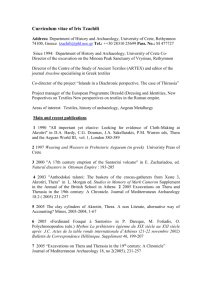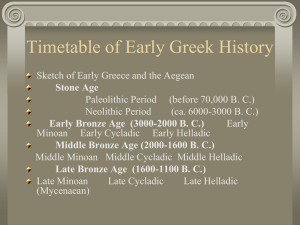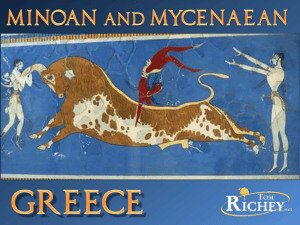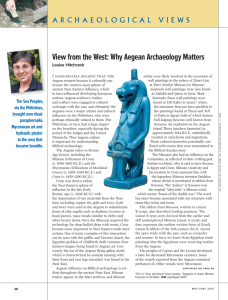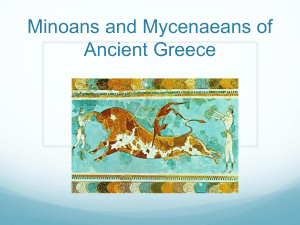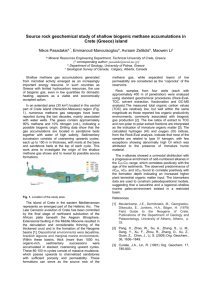Andrew Mickelson - University of Memphis
advertisement
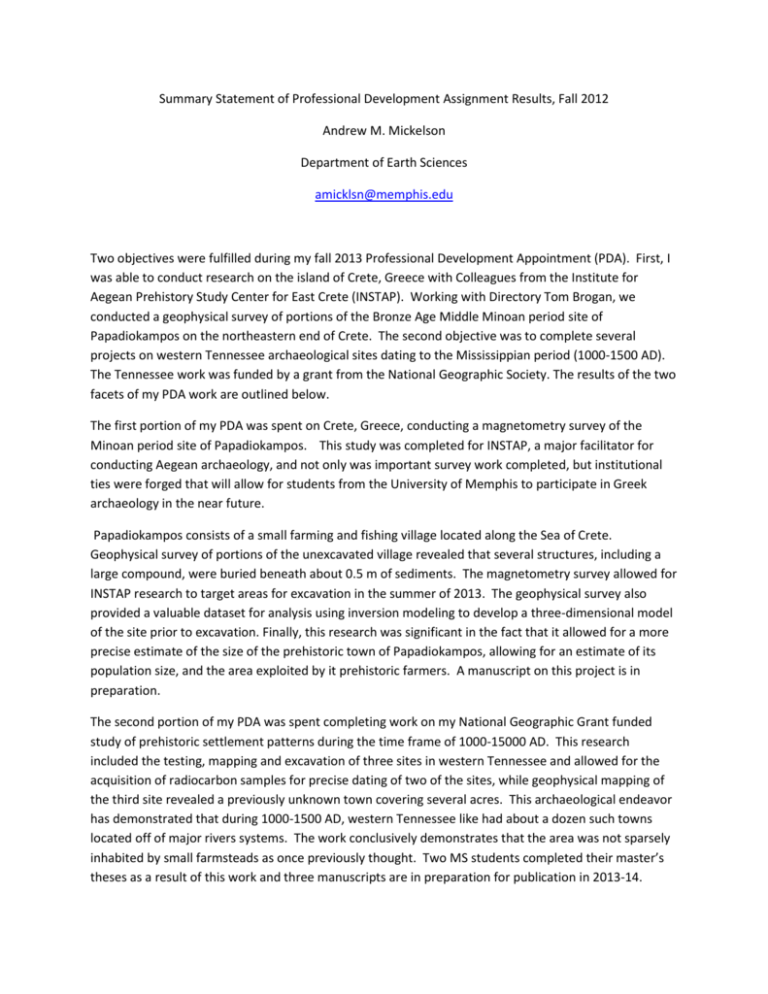
Summary Statement of Professional Development Assignment Results, Fall 2012 Andrew M. Mickelson Department of Earth Sciences amicklsn@memphis.edu Two objectives were fulfilled during my fall 2013 Professional Development Appointment (PDA). First, I was able to conduct research on the island of Crete, Greece with Colleagues from the Institute for Aegean Prehistory Study Center for East Crete (INSTAP). Working with Directory Tom Brogan, we conducted a geophysical survey of portions of the Bronze Age Middle Minoan period site of Papadiokampos on the northeastern end of Crete. The second objective was to complete several projects on western Tennessee archaeological sites dating to the Mississippian period (1000-1500 AD). The Tennessee work was funded by a grant from the National Geographic Society. The results of the two facets of my PDA work are outlined below. The first portion of my PDA was spent on Crete, Greece, conducting a magnetometry survey of the Minoan period site of Papadiokampos. This study was completed for INSTAP, a major facilitator for conducting Aegean archaeology, and not only was important survey work completed, but institutional ties were forged that will allow for students from the University of Memphis to participate in Greek archaeology in the near future. Papadiokampos consists of a small farming and fishing village located along the Sea of Crete. Geophysical survey of portions of the unexcavated village revealed that several structures, including a large compound, were buried beneath about 0.5 m of sediments. The magnetometry survey allowed for INSTAP research to target areas for excavation in the summer of 2013. The geophysical survey also provided a valuable dataset for analysis using inversion modeling to develop a three-dimensional model of the site prior to excavation. Finally, this research was significant in the fact that it allowed for a more precise estimate of the size of the prehistoric town of Papadiokampos, allowing for an estimate of its population size, and the area exploited by it prehistoric farmers. A manuscript on this project is in preparation. The second portion of my PDA was spent completing work on my National Geographic Grant funded study of prehistoric settlement patterns during the time frame of 1000-15000 AD. This research included the testing, mapping and excavation of three sites in western Tennessee and allowed for the acquisition of radiocarbon samples for precise dating of two of the sites, while geophysical mapping of the third site revealed a previously unknown town covering several acres. This archaeological endeavor has demonstrated that during 1000-1500 AD, western Tennessee like had about a dozen such towns located off of major rivers systems. The work conclusively demonstrates that the area was not sparsely inhabited by small farmsteads as once previously thought. Two MS students completed their master’s theses as a result of this work and three manuscripts are in preparation for publication in 2013-14.

